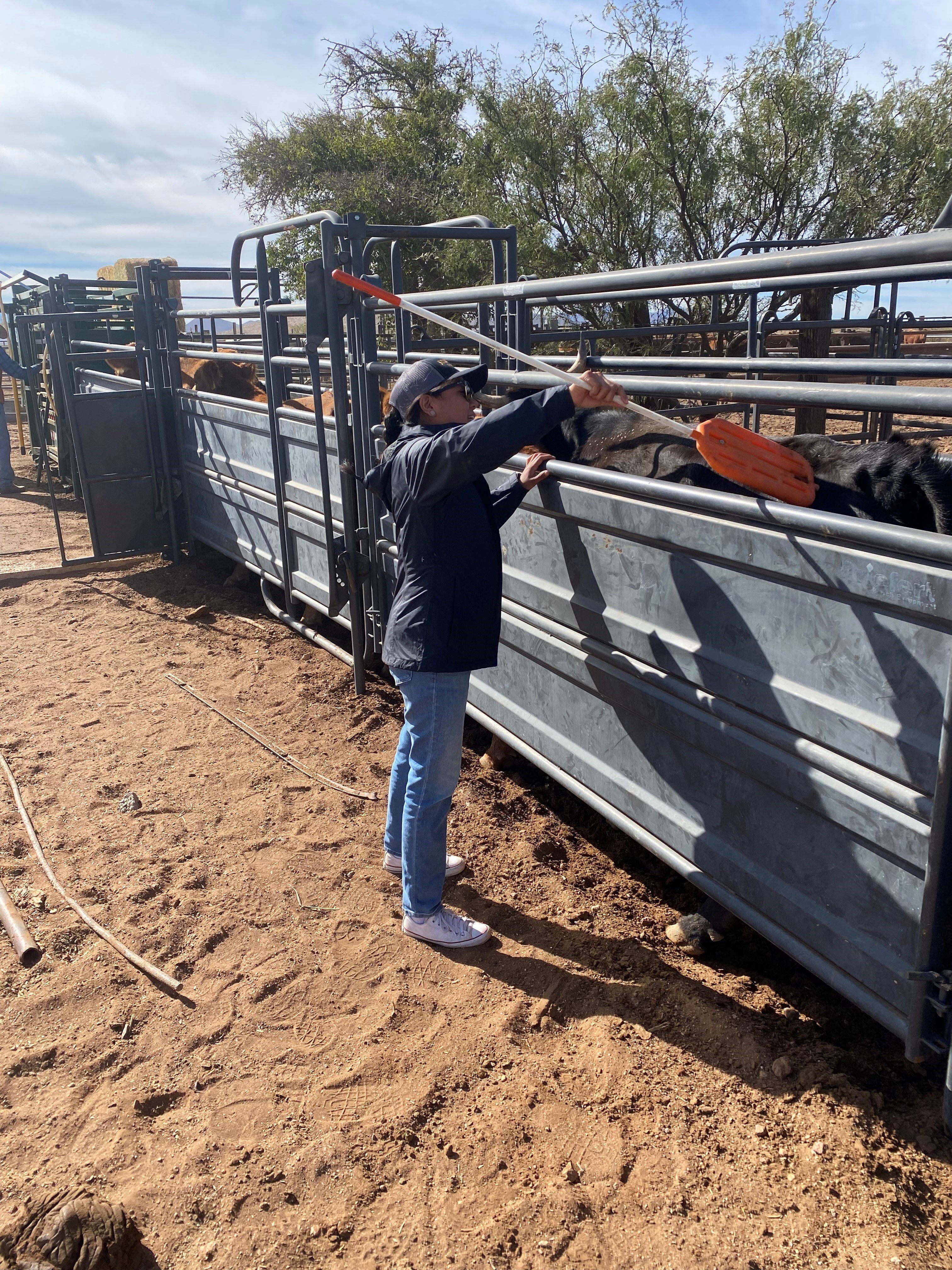Mentor Protégé CAMP Class 3, Profile 3: Chase Skaarer and Samantha Yazzie
Author
Published
4/16/2024
The CAMP mentor/protégé 2024 series continues for Class 3 with rancher Chase Skaarer and NRCS employee, Samantha Yazzie. The Skaarer/Yazzie team has met more than once, and Yazzie has received some exposure to the various stages of the cattle industry.
The Conservation Agricultural Mentoring Program (CAMP) in Arizona, in partnership with the Arizona Farm Bureau, has now been at it for three years. This program, unique in its regard, has a double dose of uniqueness as the Arizona NRCS team approached the Farm Bureau to partner with them in the effort.
The Skaarer/Yazzie partnership, along with all the mentor protégé partnerships for Class 3, works to understand Arizona agriculture and conservation opportunities, joining forces to provide firsthand experience of the conservation practices and agricultural happenings.

Samantha Yazzie joined mentor Chase Skaarer during a cattle-shipping day.
Mentor: Chase Skaarer
Talk about your first meeting: Samantha and I actually work together at NRCS. I am the master planner for team 8 and took Sam under my wing as a new range con. Because I am also a rancher I have been involving her in brandings, pregnancy checking, and other cattle work as well as checking waters and fixing leaks.
What about the subsequent meetings? I have exposed Sam to many stages of the cattle industry from calving, and seed stock production up to weaning cattle at our local feedlot. We also visited a local packing plant that sells locally sourced beef and pork.
Share specifics about what you got out of it as the rancher: This opportunity has given me some perspective about the experience some new employees have coming into this job. There were things I took for granted that everyone would know and now I know that is unfair of me as a rancher to put that expectation on a new NRCS employee.
For the remaining time with the program, what do you also hope to help with? I would like to continue to expand Sam’s knowledge of how a cattle ranch operates to better prepare her to offer solid technical advice to future ranchers.
Why do you think this program is valuable? This program gives new employees who do not have agriculture experience the opportunity to learn what is involved in production agriculture. For example, while designing a watering system we discussed the plumbing parts that were required for the pump discharge. This led to a trip to the local hardware store and the ranch to show Samantha what was needed, why it was needed, and how it worked in the system.
Protégé: Samantha Yazzie
What’s been the biggest takeaway from your first gathering? Subsequent ones? Chase and I have been working together with NRCS for over a year now. He has taught and shown me quite a lot about the agriculture industry.
How do you see this helping a broader set of NRCS employees? What’s key for you? I think this allows NRCS employees to grab a larger and deeper perspective on the agricultural industry and the agricultural producers. A key for me is to better understand producers and what issues they face, in terms of bettering the ranch and management and turning that issue into a resolution.
Why have you felt this program has been helpful? This program has been helpful because it allows me to see more of the background of what ranchers do on a day-to-day basis. In terms of when cattle need to be sold, implementing the needs for the ranch, maintaining the ranch, grass production, cattle pregnancies, water distribution, etc. This program allows me to see it from the producer’s perspective.
What more do you hope to learn? I hope to learn as much as I can. So I can become a better and more effective planner for Arizona producers.